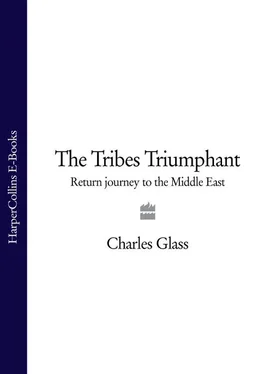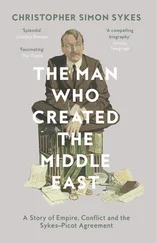Mr Amrin had taken his degree in English at the University of Amman. His favourite playwrights were Shakespeare and Marlowe, fellow partisans of royalty. He enlisted in the Jordanian army, serving three years in England at Catterick Barracks, near Darlington, North Yorkshire, studying electronics. When he returned to Kerak, his home town between Amman and Aqaba, he married. Jordan and Israel signed a treaty of peace in 1994, and former Staff Sergeant Amrin moved to Aqaba to claim the promised riches of peacetime tourism. He studied his country’s archaeology, history, even its geology, flora and fauna. He became a first-class tour guide in a land without tourists.
‘In the tenth century BC,’ he informed me, marching over a seaside dig next to the Movenpick, ‘this was a Solomonic port. It served the Nabataeans and the “Ptolemites” ’. Mr Amrin was a rare figure for the Middle East, an honest interpreter of history. Some Arab guides omitted the connection between the land and the ancient Israelites, as most Israeli archaeologists and tour companies avoided references to the Arab, his culture and his history. To Mr Amrin, who was once Staff Sergeant Amrin of the Royal Jordanian army’s engineering corps, the story was incomplete without Jews, Arabs, Greeks, Romans, Nabataeans, Turks and the British. The ‘Ptolemites’, descendants of Alexander the Great’s General Ptolemy, had ruled Egypt from Alexander’s death until the Roman conquest.
Mr Amrin explained how the other side of the Gulf came to be called Eilat: ‘In the Muslim era, this was called Ela or Wela, which means “palm tree”.’ The ruins were so far beneath our feet that all I could see were brick-lined trenches. The archaeologists had a way to go, but they had forced the government to preserve the ancient Nabataean – Ptolemaic remains from burial under a hotel. It may have been an economic calculation: Aqaba had plenty of hotels but not much history. Walls two millennia old gave it an edge over Eilat, whose oldest structure dated to 1949. The earthworks that Mr Amrin showed me were a small portion of the Roman achievement, a link in the empire’s land – sea communications between the fertile hills of Felix Arabia, now Yemen, and garrisons in Egypt and Palestine. The rest of it was under either the Movenpick Hotel, where no one would see it, or the Red Sea, where anyone with goggles and flippers could have a look.
Aqaba as it came to exist was the creation of Islam’s third Caliph, successor to the Prophet Mohammed, Othman. Mr Amrin’s tale jumped from the pious Othman, one of the four ‘rightly-guided’ Caliphs, to modern Jordan. He said the Emirate of Transjordan was born of the Meccan Sherif Hussein bin Ali’s struggle during the First World War. Without prompting from me, he said, ‘Don’t forget the English and the French, of course.’
On our way to the Turkish fortress, our shoes collected the dust of Roman and early Muslim digs. We passed beaches where Jordanians above the age of twelve wore enough clothing for an English winter and children were stripped down to bathing suits. Mr Amrin said this was the ‘free beach’, one of the last that had not been sold to developers to serve the foreign tourists who no longer flew to Jordan or anywhere else in the Levant. Beside the shore, tiny plots of garden, bordered by squares of raised earth, sprouted green vegetables and spiky herbs.
Mr Amrin was, like most other native Jordanians, a monarchist. It was not the system he admired so much as the man, or the men. He talked about the dynasty that had given its name to the Hashemite Kingdom of Jordan. His story began with the patriarch, Hussein bin Ali, already an old man when the British encouraged him to lead a tribal – in Lawrence’s fantasy, national – revolt against the Ottoman Empire. His sons, Abdallah, Feisal, Ali and Zeid, harassed the Turks in the east, while Britain advanced from the west. Hussein, meanwhile, practised politics, conspiracy and diplomacy in Mecca. The Arabs were more successful at fighting than Hussein was at politics. The old man subsequently lost Mecca itself to another of Britain’s Arab supplicants, the Al-Sauds from the inland desert of Nejd. Britain’s favourite among the Hashemite sons, Feisal, became King of Syria. His throne in Damascus lasted almost a year, until France took its share of the Ottoman Arab spoils and expelled him. In compensation and for its own purposes, Britain awarded him a richer prize, Iraq with its fecund earth and its oil. The British killed at least ten thousand Iraqis to impose Feisal upon them; and his dynasty lasted until a year after the British left and a mob got its hands on his grandson, Feisal II, in 1958. Another of old Hussein’s sons, Abdallah, founded Jordan – ‘Don’t forget the English and the French, of course’ – in the desert between Iraq and Palestine. Jordan was the booby prize. Until Abdallah, it was nothing more than the desert waste that kept Iraq and Palestine apart, the Crusaders’ Outre-Jourdain. But it was the only one of the four Hashemite crowns – Jordan, Syria, Iraq and the Hejaz – that survived. Abdallah’s successors were his son Talal, Talal’s son Hussein and Hussein’s son Abdallah, whose picture gazed upon the ruins.
‘I can say the late king was the creator of modern Jordan,’ Mr Amrin informed me, referring to Hussein. ‘He was humble. He listened to the radio to hear the people’s complaints. He created a sense of love among the people.’
And the son?
‘I believe the same is happening with Abdallah.’
The land around the citadel had been cleared since my 1973 visit, and there was no longer any need to scratch my way through the brush. We stopped outside the walls, as Lawrence did before the Turks surrendered. Above the vast, open Mamluke gate were two metal flags, painted by hand. ‘People think that is the Palestinian flag,’ Mr Amrin was pointing at one. ‘It isn’t. It’s the flag of the Great Arab Revolt.’ A British officer had designed the red – white – green – black standard of Sherif Hussein bin Ali’s Arab army in 1917, and most Arab flags were variants of it. The Lebanese with its green cedar between red stripes was the exception. The Palestinians – the last standard-bearers of Arab nationalism – adopted the Sherifian flag without alteration. With that flag came lies: that the Arabs were an independent nation, albeit temporarily separated into states with their own flags; that the Arabs would liberate Palestine; that Arab warriors had somehow defeated the Turkish, French and British empires; and that, one day, they would expel the American empire’s pampered child, Israel, from their midst.
An old gatekeeper asked us to pay a fee. When Mr Amrin explained my purpose, the man invited us in as his guests and sat down again in the shade of the massive iron gates. Mr Amrin pointed to some writing, carved into the wall, in beautiful Kufic Arabic script, a lavish calligraphic style that originated in Kufa, Iraq: ‘This inscription honours Kalsum al-Ghuri, one of the leaders who fought the Portuguese from 1505 to 1520.’ Portuguese raiders in the sixteenth century were discovering and claiming the more vulnerable parts of Arabia, India, Africa and the Americas. Kalsum al-Ghuri appeared to have saved Aqaba, and thus Syria, from the massacres of Muslims, Jews and heterodox Christians that accompanied Portugal’s Renaissance conquests further east.
Mr Amrin showed me, between the testament to the Mamluke chief al-Ghuri and a carved verse, or sura , from the Koran, ‘a secret passage to leave the place in wartime’. I looked deep inside the walls, where a tight corridor disappeared into darkness. We didn’t go in. Next came the courtyard, a stone parade ground protected by four high walls. ‘It’s very different, if you were here in ’73,’ he said. The difference was that I could see it. Then, weeds hid the well, the storerooms and the stairs below the ramparts. Now, it seemed like the Alamo, a barren shrine to a mythic struggle. On the stones where Ottoman levies had once borne aloft their Sultan-Caliph’s flag and guarded the southern approach of empire, Turkish officers chose surrender over siege and annihilation in 1917. If they had fought to the death, and if the Turkish governors to the north had not antagonized the Arabs of the cities by hanging their leaders, might their deaths have inspired their comrades to rally and repulse the British? Would the cry ‘Remember Aqaba!’ have saved the Ottoman Empire from destruction? Turkey still held the holy cities of Medina and Jerusalem in 1917, and many thousands of Turks would die before their armies retreated for ever from Arabia and Syria into Anatolia. If the Turks, like the British, had bribed and made false promises to the Arabs, they might have made the conquest of Syria too costly for the British to carry on. Like the American empire of the twenty-first century, Turkey took Arab acquiescence as a constant in all their calculations. It was a mistake.
Читать дальше












